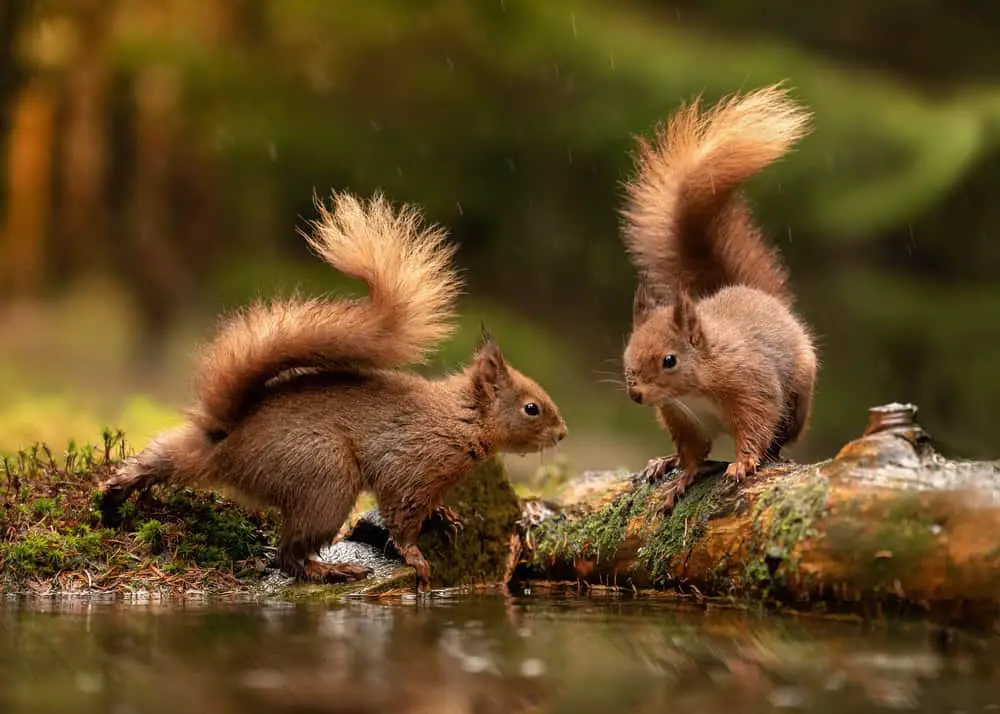
With over 50 genera and 268 species, squirrels have adapted to living in a wide variety of conditions. All squirrels have lean bodies and characteristic bushy tails, but the different types of squirrels show significant variation in size, coloring, and behavior.
There are over 200 different types of squirrels divided into 50 genera. Squirrels are grouped into one of three categories: flying, ground, and tree squirrels. Flying squirrels have patagia and live in trees. Tree squirrels also live in trees but have no patagia. Ground squirrels live in burrows.
Squirrels are exemplary students of Darwinian theories of evolution; these tiny creatures have rapidly evolved into easily distinguishable species in response to the environmental stresses placed on their colonies.
Table of Contents
- The Three Main Types of Squirrels
- Flying Squirrels
- Ground Squirrels
- Tree Squirrels
- Conclusion
The Three Main Types of Squirrels
The taxonomy classification of squirrels places them in the family Sciuridae, which also contains marmots, prairie dogs, and chipmunks, i.e., this is one cute family group. The squirrels in the family Sciuridae are loosely divided into three groups: tree squirrels, ground squirrels, and flying squirrels.
Flying Squirrels
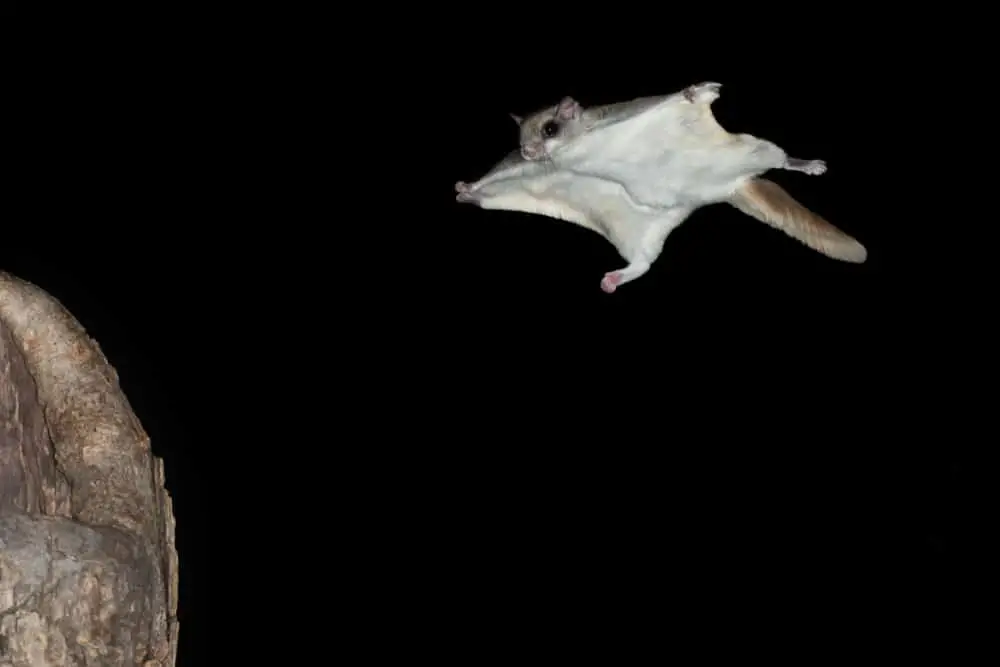
The flying squirrel, also known as the gliding squirrel, is easily distinguishable from the tree and ground squirrels by their trademark “parachute-types wings” called patagia. These “wings” are not true wings and do not grant the flying squirrel the ability to engage in the genuine flight of a bird or butterfly.
A flying squirrels’ “wings” act as a membranous parachute that allows the flying squirrel to glide from tree to tree hence the alias “gliding squirrel.”
How Does a Flying Squirrel Glide?
All flying squirrels have a membrane of skin and muscle that stretches between the front and back legs, and a few species also feature an additional membrane between the front legs (shoulders) and the neck-head boundary.
A cartilaginous rod extends from the wrist of the flying squirrel, where it acts as a frame and supports the membrane. This semi-rigid rod fills a similar function to the wooden frame of a kite. A frameless kite won’t fly because the membrane collapses in upward drafts.
As the squirrel makes its leap of faith from its perch in the upper tree canopy, it extends its legs, transforming the membrane into a parachute. By manipulating its membrane muscles and tail, the flying squirrel controls the speed and direction of its descent. Just before landing, the squirrel angles its membranes upwards by braking with its tail allowing them to land gently on all four legs.
How Far Can a Flying Squirrel Glide?
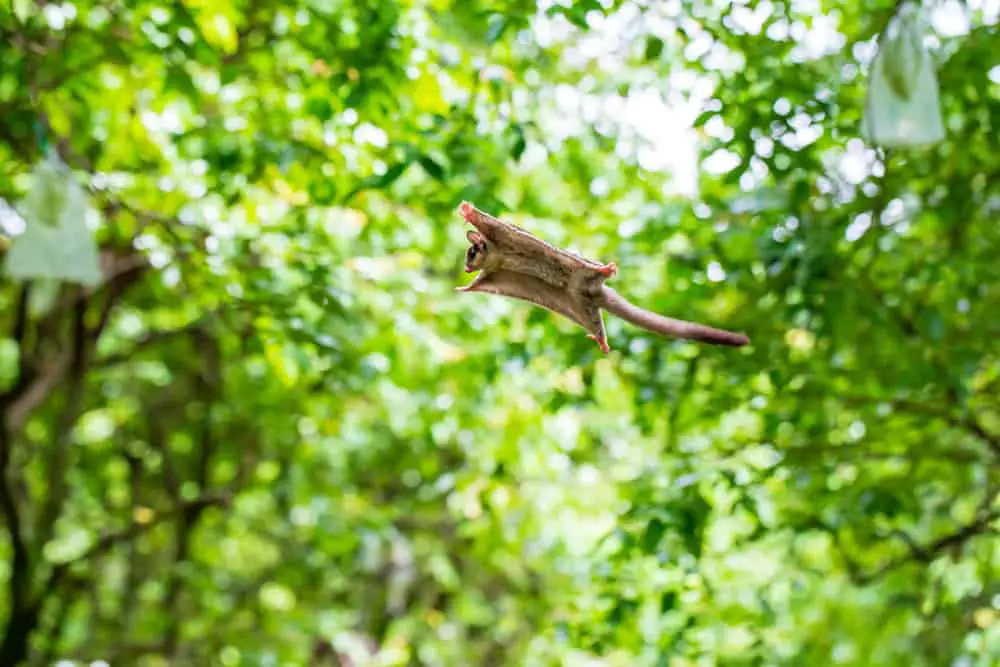
A few species have made record-breaking glides of 1500 feet (450 meters). That is an amazing demonstration of athletic prowess for an animal that technically doesn’t fly but instead rides the air currents like an aerial surfer!
Geographical Distribution of Flying Squirrels
Of the more than 50 species of documented flying squirrels, 3 make their homes in North America, 2 in Eurasia, and the remaining species all flock to India’s tropical and temperate forests. A few species do not make their homes in India, preferring the habitat in neighboring countries.
Behaviour and Habitat of Flying Squirrels
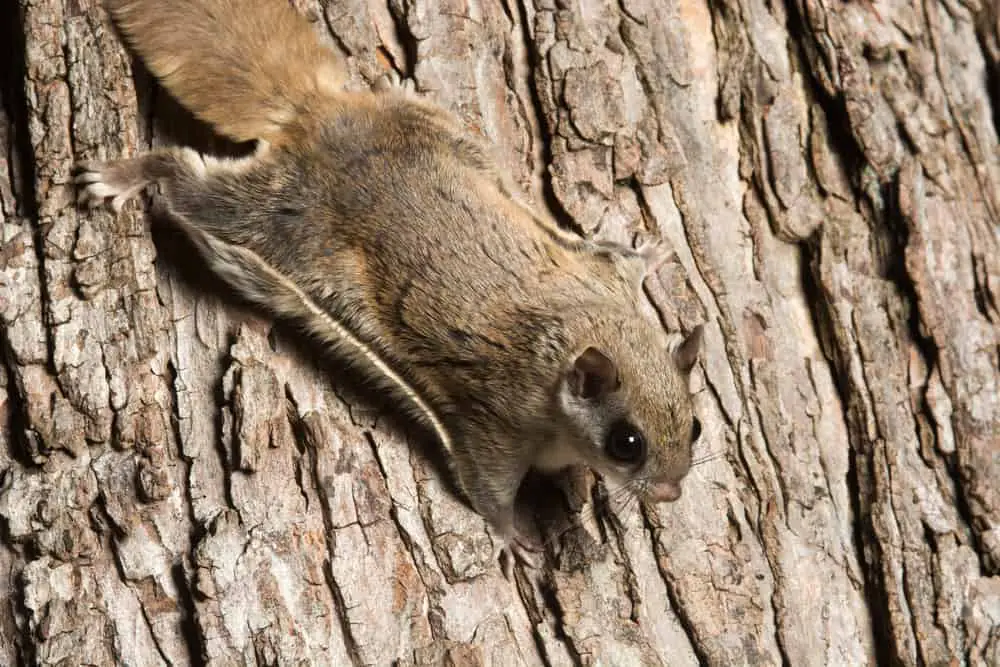
Flying squirrels prefer to live in old, well-established forests with extensive arboreal habitats. These tall, stately trees provide the perfect opportunity for the flying squirrels to showcase their gliding skills.
Unlike most squirrel species which are most active during the day, flying squirrels are nocturnal. Their large eyes and tufted ears allow them to easily detect nighttime predators lurking under the cloak of darkness. Flying squirrels neatly evade potential predators by evacuating the current tree and gliding to a neighboring tree or branch.
Flying squirrels are notoriously challenging to study due to their excellent camouflage, inaccessible habitats, and shy natures. The flying squirrel is not a flashy performer and prefers to go undetected in the upper reaches of the tree canopy.
Are Flying Squirrels Pests?
Flying squirrels rarely interact with humans; their shy, elusive behavior makes them difficult squirrels for people to find. Flying squirrels are not pests, and it is illegal to hunt them in most parts of the world.
What are the Three Flying Squirrel Types Found in America?
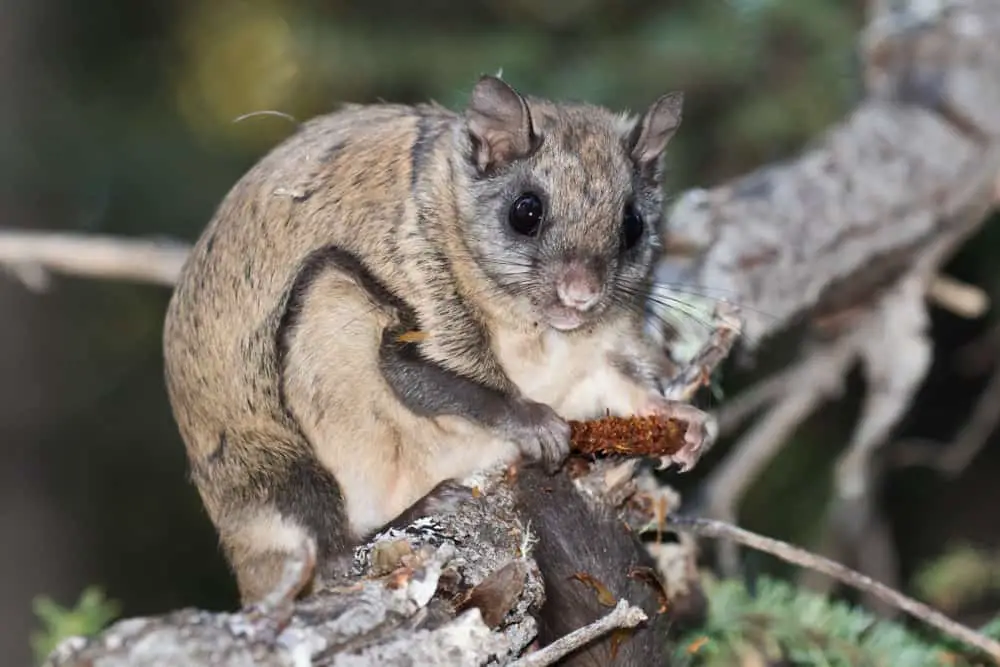
Until recently, scientists assumed that North America hosted only two species of flying squirrels, the Northern Flying Squirrel and the Southern Flying Squirrel. In 2017, scientists were delighted to discover that the atypically small dark Northern Flying Squirrel was not actually a Northern Flying Squirrel but an entirely separate species of squirrel.
After genetic analysis and comparison confirmed the scientist’s suspicion, the new species of flying squirrel was named Humboldt’s Flying Squirrel (Glaucomys oregonensis). Convergent evolution meant that while Humboldt’s Flying Squirrel and the Northern Flying Squirrel have similar appearances, behaviors, and ranges, they are easily distinguishable on a genetic level.
It is believed that the Humboldt’s Flying Squirrel predates the Northern and Southern Flying Squirrels by 1.3 million years when it diverged from their common ancestor. Perhaps, it is incorrect to classify Humboldt’s Flying Squirrel as a “new” squirrel species as it existed before the Northern and Southern Flying Squirrels diverged into separate species.
One of the most surprising aspects of Humboldt’s Flying Squirrel is their refusal to breed with their geographic neighbor, the Northern Flying Squirrel. Closely related species, like the Northern and Southern Flying Squirrels, will frequently interbreed, creating hybrid offspring.
The Humboldt’s flying squirrel’s refusal to engage in similar crossbreeding strategies highlights how genetically distant they are from northern and southern flying squirrels.
Ground Squirrels
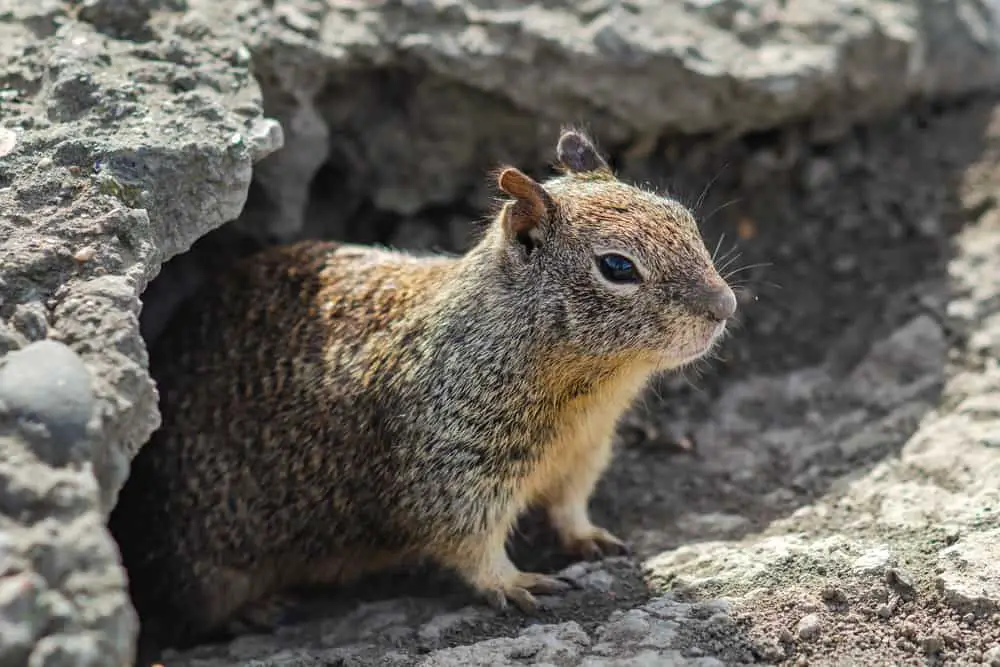
There are 62 species of ground squirrels, divided into 5 genera. These squirrels have short legs, long bodies, and ultra-sharp claws perfect for making their homes in burrows. Ground squirrels were dubbed “ground” squirrels due to their propensity for making their homes in ground burrows rather than in the trees like flying squirrels and tree squirrels.
Most species of ground squirrel feature one of the earth-toned sepia colors that match with the surrounding terrain, i.e., tawny, grey, red, pale brown, and dark brown.
The dark base colors are further muted by various patterns that mimic the color variations seen in any natural setting. The most common coat patterns amongst ground squirrels feature some variation of spots, dappling, or stripes.
Human eyes and the eyes of most predators are attuned to novel or unusual disturbances in the shapes, movements, and colors hidden amongst rocks and trees. The broken pattern of the ground squirrels’ coats allows them to blend seamlessly within their habitats, rendering them virtually invisible to most predators.
The ability to be “invisible” while hiding in plain sight is paramount to the tiny squirrels’ survival in a very large and hostile world!
The Ins and Outs of a Ground Squirrel’s Burrow
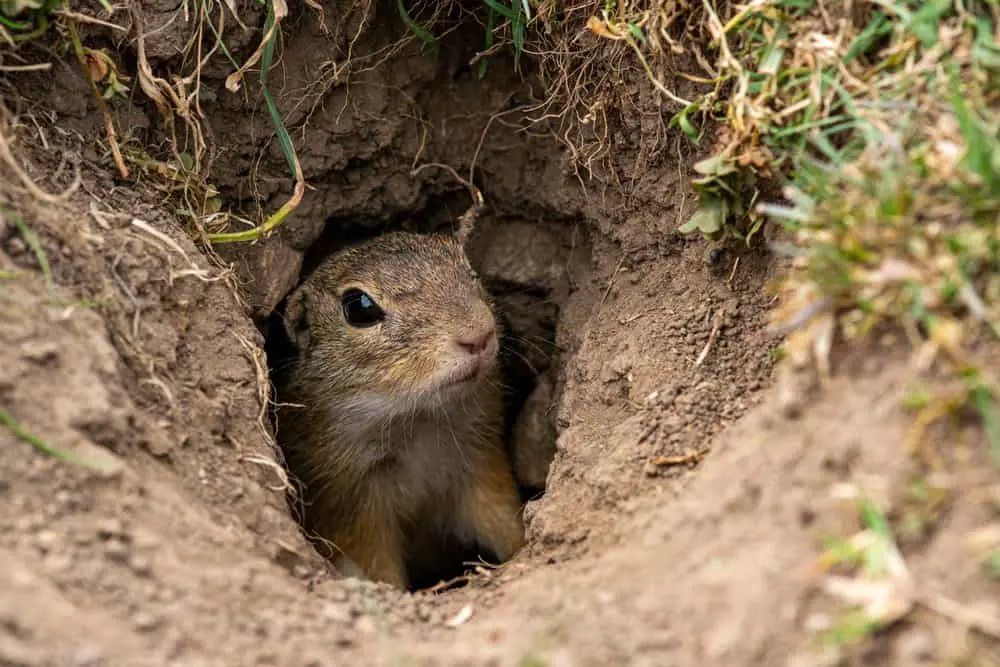
A ground squirrel’s life revolves around their burrow; they eat, sleep, make babies and raise those babies in the burrows. Burrows are not only their home but also their protective shelter in harsh weather conditions and an important survival mechanism when faced with predators’ intent on adding squirrels to their diet.
The scattered surface openings of burrows cause many people to dismiss the squirrels as unstructured, chaotic pests. In reality, these tiny creatures are master engineers and design their burrows with practicality and comfort in mind.
The burrow’s architecture varies according to the different ground squirrel species; however, most ground squirrels have a base model similar to Richardson’s Ground Squirrel.
The burrows typically feature 5 to 10 surface entrances and exits and include:
- 5 to 10 sleeping chambers which also function as nesting chambers for breeding females
- 1 or more pantries for food storage
- 1 latrine
- 1 hibernaculum
- 1 or more drainage tunnels
The entire tunnel system can be 3 to 6 feet deep and 32 to 35 feet across. These tunnels are not a mistake but rather the thoughtful construction of an intelligent mammal.
A Ground Squirrels Defence System
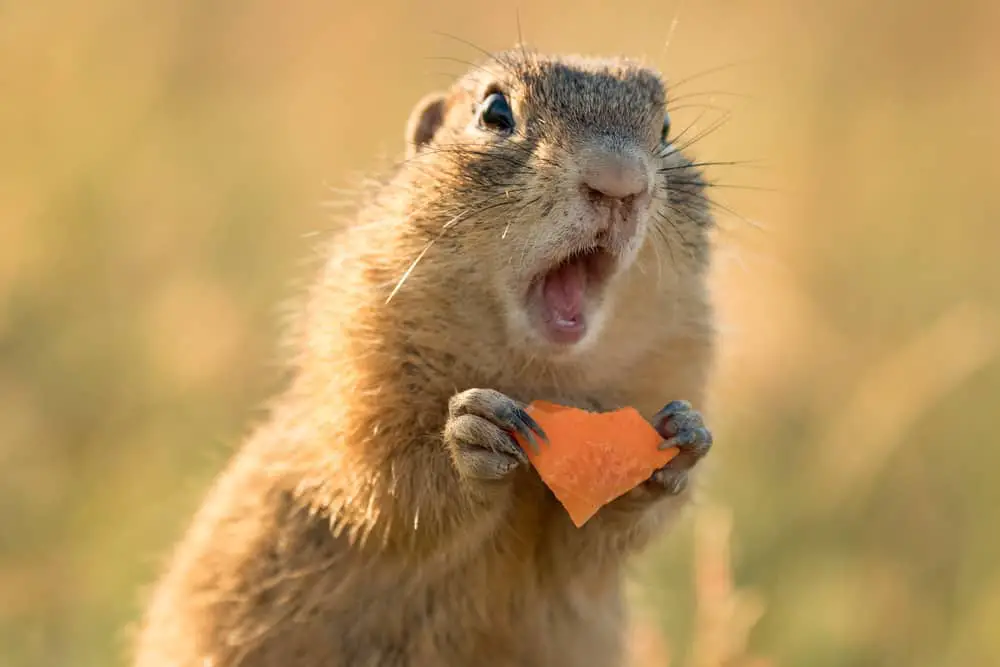
Ground squirrels have a cooperative defense system, in which they have dedicated sentries and sophisticated alert systems.
Ground squirrels have three basic warnings based on the type of predator the sentry has spotted.
- A single sharp whistle alerts the neighboring ground squirrels to a winged predator, e.g., a hawk, eagle, or other bird of prey.
- A constant stream of alarmed chatter indicates the presence of a four-legged predatory mammal, e.g., fox, badger, or coyote.
- High-pitched sporadic chatter indicates the presence of a snake.
Combat Relations Between Rattlesnakes And Ground Squirrels
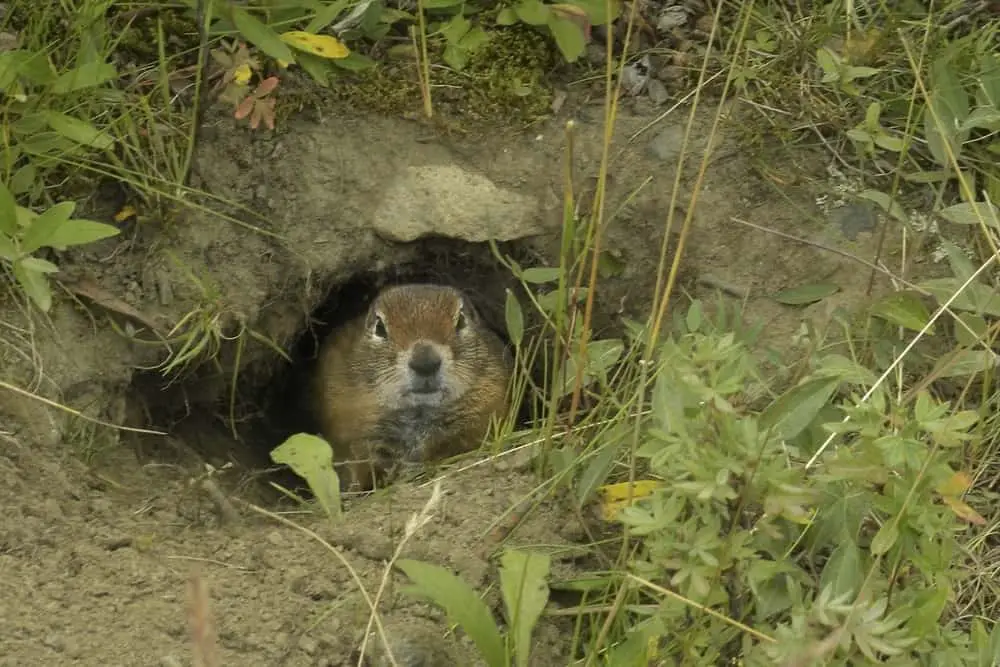
However, the most exciting combat interaction occurs between rattlesnakes and ground squirrels. Instead of avoiding conflict with approaching rattlesnake, the brave little squirrels will ferociously defend their burrows and vulnerable pups.
The impudent squirrels can survive a direct rattlesnake strike due to bloodborne enzymes, which effectively reduce the potency of the rattlesnake’s toxins.
When a ground squirrel spots a snake, they emit chirping noises similar to those emitted in response to predatory mammals. However, the alarm signal for snakes is more sporadic and sharper than the predatory mammal warning signal.
In response to the snake warning, the squirrel colony gathers as a united group and begins flagging their tails, i.e., vibrating a stiff tail. This behavior causes the squirrels’ muscles to heat up, and the thermal message is detected by two heat-sensitive pit organs in the rattlesnake’s head.
The thermal message warns the snake of the hostile squirrel colony, resulting in a change in the rattlesnake’s behavior, the rattlesnake switches from offensive maneuvers to evasive defense.
Despite their hostile welcome, rattlesnakes continue entering ground squirrel’s colonies, as infantile and juvenile ground squirrels are the primary food source for rattlesnakes emerging from hibernation. These young ground squirrels have not yet achieved immunity and remain vulnerable to a rattlesnake’s lethal bite.
Geographical Distribution of Ground Squirrels
Thirty-eight species of ground squirrel are found in the temperate latitudes of North America and Eurasia, making their homes in the open plains at sea level, mountain tops, and occasionally forests.
The southwestern regions of the USA and northern Mexico are home to one the smallest (white-tailed antelope squirrel) and one of the largest rock squirrel species.
Central Asia features only a single species of long-clawed ground squirrels, who have made their homes in the sandy deserts of Central Asia.
The savannas and rocky deserts of southern, northern, and eastern Africa are home to 4 African squirrel species belonging to the genus, Xerus.
The widely distributed Barbary Ground Squirrel has chosen to occupy Northwest Africa. This species can be found in almost all regions ranging from sea level to the Atlas Mountains at 13 000 feet above sea level.
Ground Squirrels Preferred Habitat
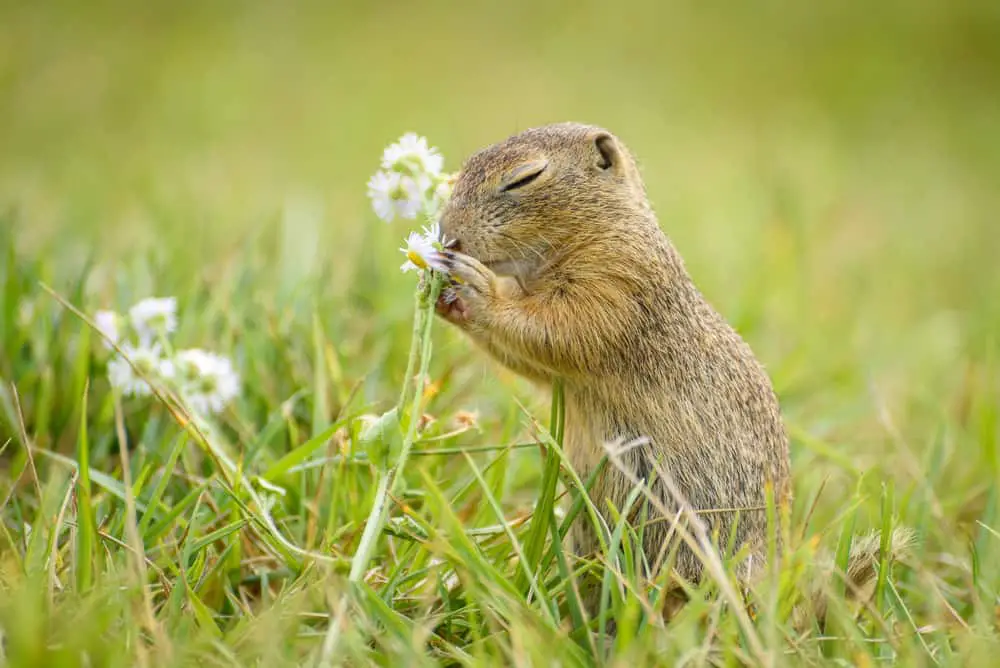
Everyone wants real estate with a panoramic view, but where this is a luxury for humans, it is a necessity for ground squirrels.
Broad open fields and savannas are the locations of choice for ground squirrels. The unobstructed view allows them to monitor their surroundings for threats and warn colony members of approaching danger.
Few predators can sneak up on unsuspecting ground squirrels if the burrow is placed in a secure location.
Are Ground Squirrels Pests?
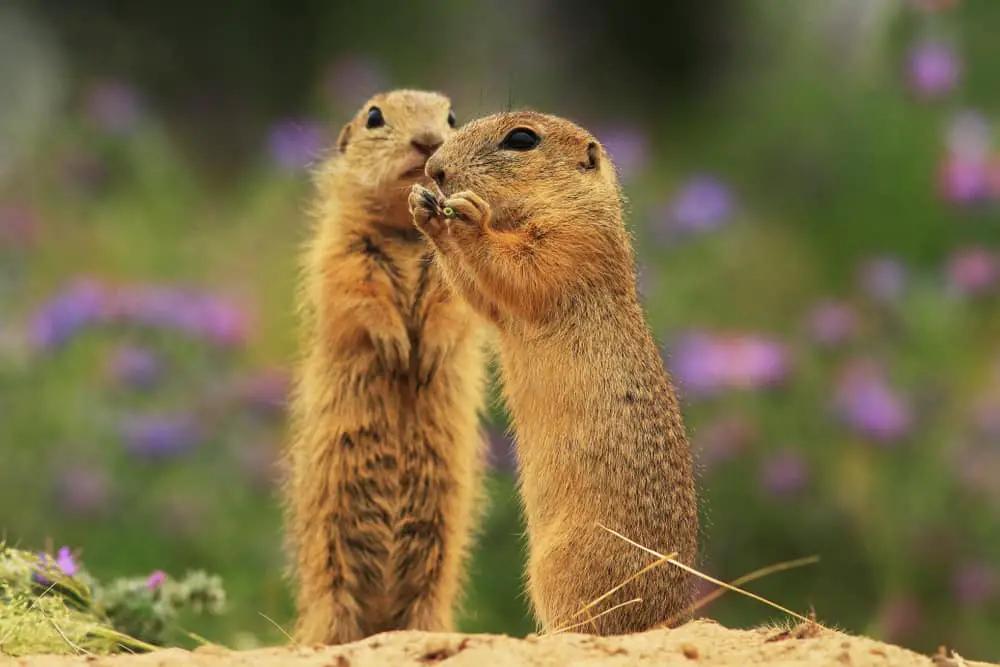
Ground squirrels prefer open land and panoramic views, which places them in direct competition with humans.
Like ground squirrels, humans prefer flatlands for grazing agricultural animals and obligingly create gorgeous lawns within the city limits. Unfortunately, humans and ground squirrels rarely cohabit peacefully.
Potential ground squirrel damage includes:
- Destruction of agricultural crops and ornamental vegetation
- Damage to infrastructure, e.g., sprinkler systems, earthen levees, and building foundations
- Potential injury to livestock and pedestrians
- Complicating land maintenance and farming endeavors, e.g., it isn’t easy to mow a lawn populated by ground squirrel burrows.
- Potential to spread disease and parasites, e.g., fleas, bubonic plague, etc.
While ground squirrels may be the nemesis of enterprising gardeners and farmers, they are the lynchpin that holds many grassland ecosystems together.
As a keystone species, the extermination of ground squirrels would result in the catastrophic collapse of multiple ecosystems; the ripple effects will continue to be felt for many centuries to come.
Ground squirrels impact their ecosystem on multiple levels by:
- Turning soil, moving, and planting seeds.
- Providing climate-controlled subterranean homes and shelters for other animals, including tarantulas, salamanders, and various species of frogs, many of whom are endangered
- Burrowing owls, San Joaquin Kit Foxes, and coyotes enlarge ground squirrel burrows, converting them into dens used for shelter and raising of their young
- Golden eagles, coyotes, badgers, bears, and many other predators rely on the ground squirrel as their primary food source.
Without the ground squirrel, many animal and plant species would become extinct.
(Sources: Bay Nature; Statewide Integrated Pest Management Program)
What Types of Ground Squirrels are Found in North America?
Since April 2009, 26 species of North American ground squirrels have been grouped into 6 genera:
- Urocitellus
- Poliocitellus
- Otospermophilus
- Callospermophilus
- Xerospermophilus
- Ictodomys
Of the 26 North American ground squirrel species, 6 are native to Canada.
Tree Squirrels
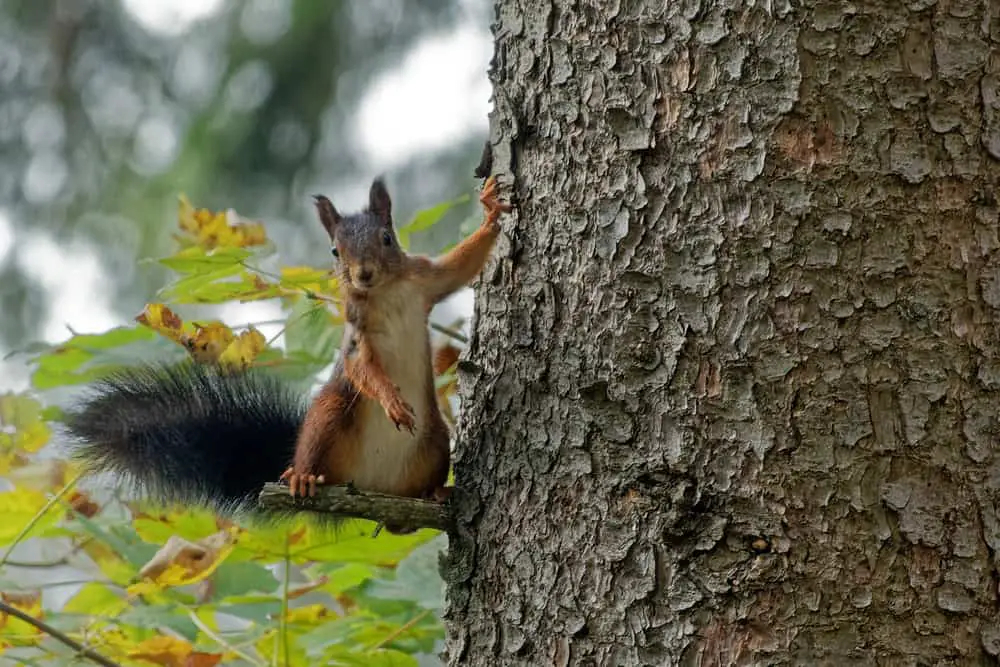
Tree squirrels are the classic squirrel portrayed in our beloved Beatrix Potter stories, bright-eyed bushy-tailed creatures characterized by a constant flow of charming chatter.
Not only are tree squirrels the squirrels of storybooks, but they are also the largest group of squirrels. There are 122 species of tree squirrels divided into 22 genera.
Like the flying squirrel, tree squirrels are arboreal animals, spending most of their lives amongst the swaying height of treetops. Unlike flying squirrels, tree squirrels do not have patagia and cannot perform the amazing glides of the kite-like flying squirrel.
Climbing Adaptations of Tree Squirrels
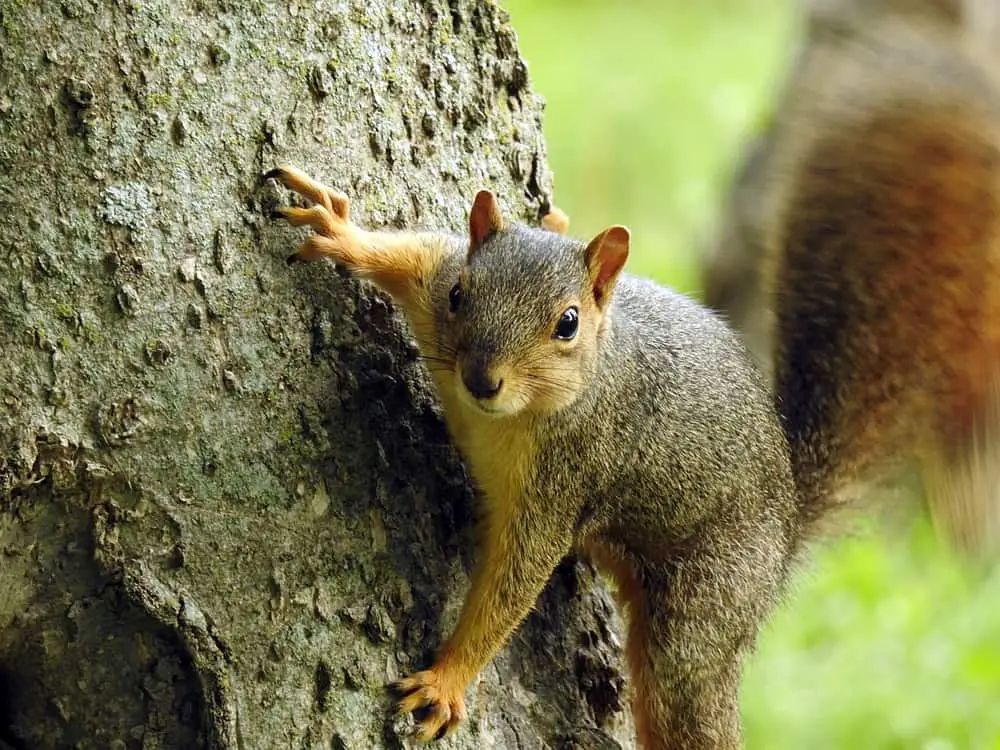
The flying squirrels’ majestic jumps and the intricacies of the ground squirrels burrow may cause people to dismiss the tree squirrels’ antics as mundane and unimpressive by comparison.
The commonality of tree squirrels often breeds contempt until a person begins to dig deeper into the adaptation of the tree squirrel. Unlike flying squirrels, tree squirrels are acrobats and trapeze artists who fly without a safety net.
The tree squirrels’ nimble feats are possible due to their hypermobile joints and sharp claws. To successfully climb up or down trees, squirrels need to:
- Ensure a secure grip
- Increase the surface area in contact with the tree, thereby increasing friction
- Control their center of mass to counter the downward force of gravity
Climbing Strategies Used to Navigate Small Trees
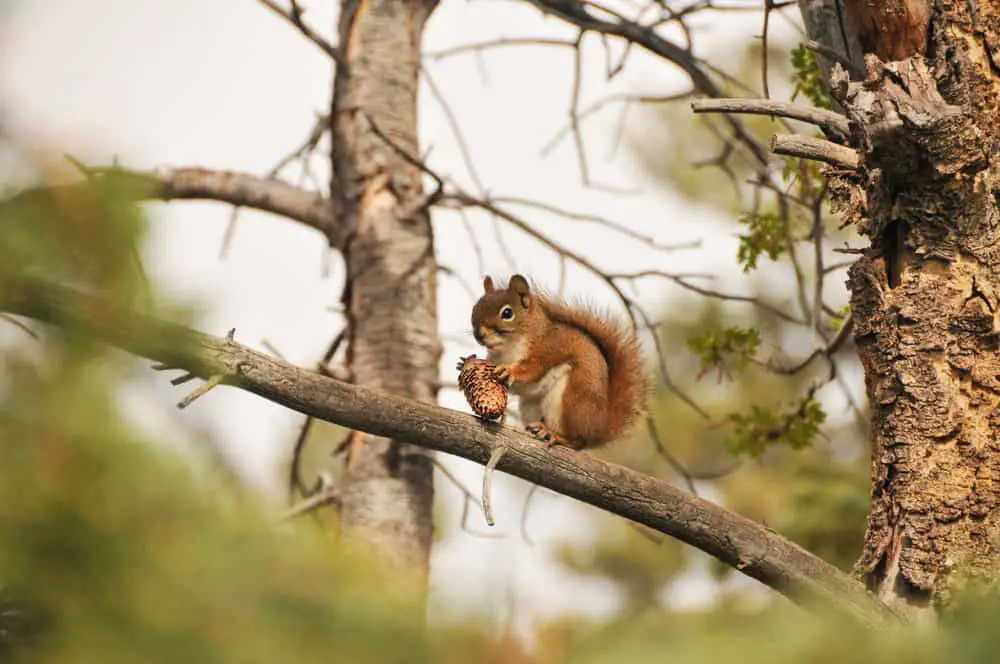
When navigating a thin tree trunk or sapling, the tree squirrel extends its wrists and ankles, ensuring maximal surface contact between the tree trunk and its paws.
The friction force generated between the squirrel’s paw pads and the tree is usually sufficient to support the squirrel’s light bodyweight in a controlled descent.
The tree squirrels powerful forearms and hindquarters enable them to efficiently and quickly propel themselves up and down thick and thin trees.
Climbing Strategies Used to Navigate Thick Trees
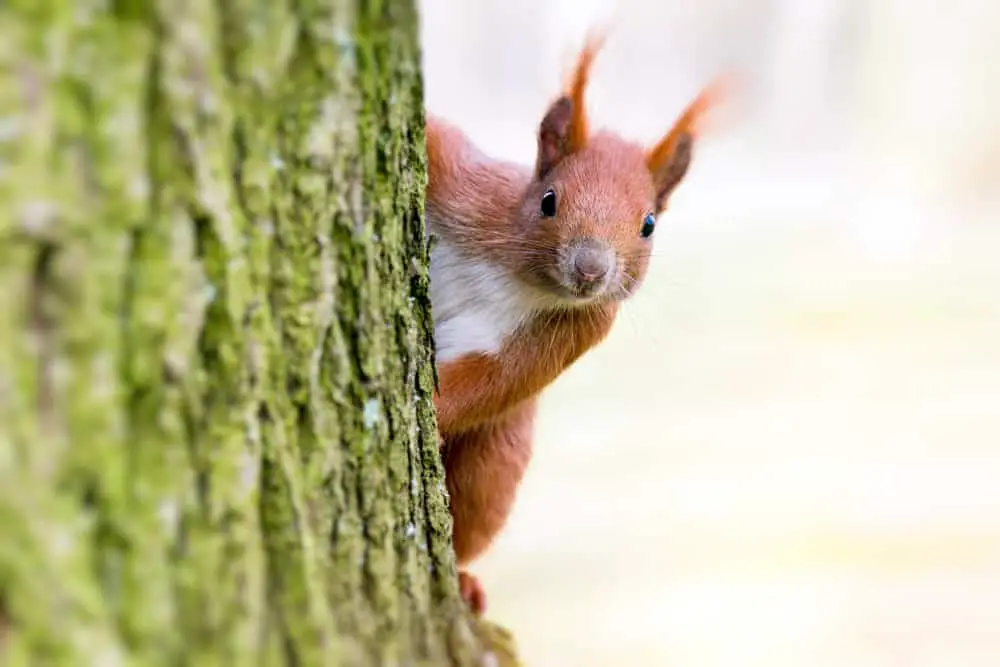
Tree squirrels cannot wrap their tiny paws around the circumference of thick tree trunks, forcing them to use alternative climbing strategies to navigate larger trees.
Porous trees characterized by flaking bark are the preferred trees for climbing. The tree squirrel shifts its friction-based climbing technique to a mechanical hook-and-hang mechanism.
The tree squirrel’s ultra-sharp claws enable the hook-and-hang mechanism. The tree squirrel digs its claws into the porous surface of the tree trunk, sinking its claws into the tree at approximately 90°.
Friction is shifted from the paw pads to the underside of the squirrel’s claws, which are positioned horizontally to the vertical direction of gravity. The hypermobility of the tree squirrel’s ankle and wrist joints allows them to optimally position their claws while controlling their center of mass.
To avoid falling, a tree squirrel must keep its body, and thus its center of mass close to the tree trunk and evenly distributed between points of contact.
Most human rock climbers require at least three points of contact to remain secure when climbing. Unlike human rock climbers, the tree squirrels’ adaptations are so effective that they remain steady and safe with only two points of contact.
Geographical Distribution of Tree Squirrels
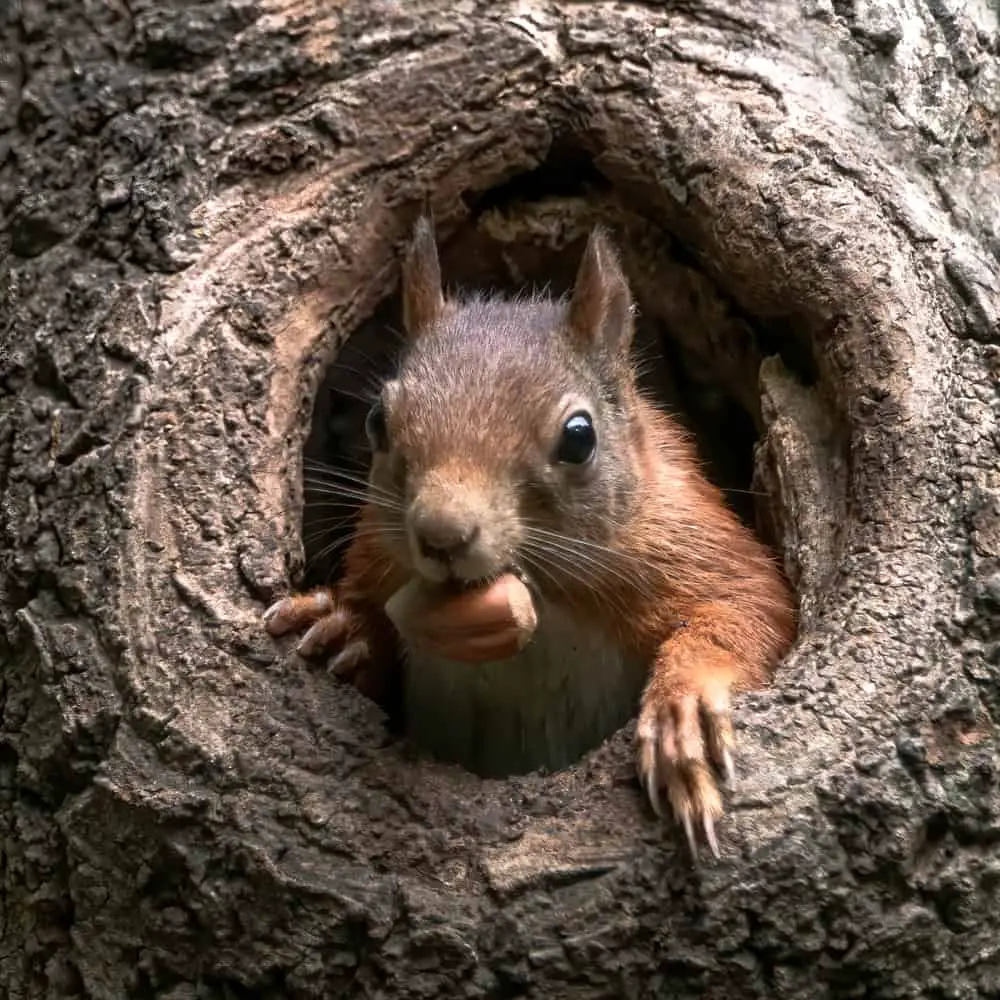
Tree squirrels are widely distributed throughout America and can be found in the forests of Alaska, Canada, the USA, and South America.
In Africa, tree squirrels have found a welcome home in African rainforests and savanna woodlands.
The boreal forests of northern Eurasia host many species of tree squirrels, many of which extend their territories into Indonesia, Taiwan, the Philippines, and Sulawesi.
Behaviour and Habitat of Tree Squirrels
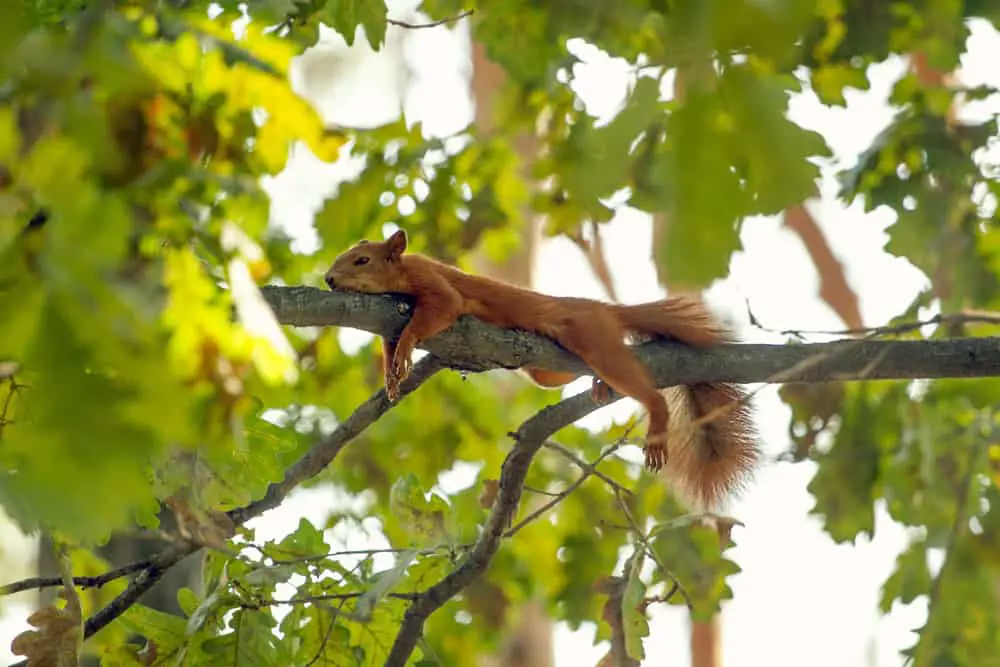
Tree squirrels are not a homogenous group and are placed in the same category due to:
- Their arboreal behavior differentiates them from the burrow loving ground squirrels
- Lack of patagia seen in flying squirrels
Unlike the nocturnal behavior of flying squirrels, tree squirrels are most active during the day, although their vertical activities vary between species.
Some species like the African Palm Squirrel spend their days foraging in the underbrush while sleeping and nesting in trees during the night hours. Other species like the Oriental Giant Squirrel and African Giant Squirrel spend their lives in the treetops, never setting foot on solid ground!
Although known for their proficiency in climbing, some tree squirrels exhibit surprising behaviors, e.g., Thomas’ Rope Squirrel, which is willing to swim underwater when the need arises.
Most tree squirrels prefer to live in tropical rainforests; however, many species have adapted to living in savanna woodlands, boreal forests, coniferous forests, and other types of established forests with a suitable food source.
Tree squirrels have proven remarkably resilient; a few species have learned to navigate the urban environment to the horror and amusement of their human neighbors.
Are Tree Squirrels Pests?
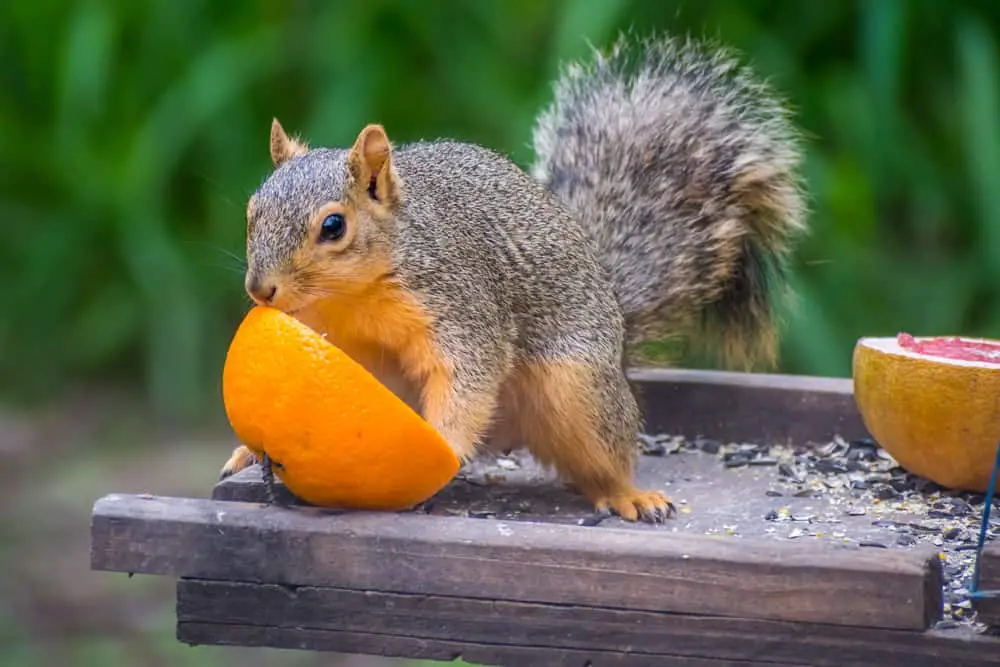
Humans are notably indecisive when viewing an urban-living tree squirrel. Squirrels consistently win first prize when polled for the most acceptable “wild” animal living in urban environments.
When surveys are done on the most destructive wild animal living in residential areas, squirrels again take first prize. It would appear that the desirability of neighborhood squirrels largely depends on their current activities!
Like, ground squirrels, tree squirrels can cause minor damage to property and infrastructure by choosing inconvenient nesting sites or chewing things they shouldn’t.
What Types of Tree Squirrels are Found in America?
Three tree squirrel species are native to Washington and most of North America; these include the Douglas Squirrel, Western Gray Squirrel, and Red Squirrel.
In the 1900s, two species of tree squirrel were introduced to the USA:
- The Eastern Grey Squirrel
- The Eastern Fox Squirrel
Conclusion
Squirrel species show a diverse range of habitats and behaviors; however, they are divided into three types based on their preferred habitats and phenotypes.
Flying squirrels have membranous patagia, which enable the arboreal flying squirrel to glide from tree to tree.
Tree squirrels lack flying squirrels’ patagia but are nimble climbers who also make their homes amongst the treetops.
Unlike tree squirrels and flying squirrels, ground squirrels prefer to remain securely on the ground, snug in their architecturally advanced burrows.
Sources:
Britannica: Squirrel
IUCN Redlist: Squirrel Species
Britannica: Flying Squirrel
Rewild: The Superheroes of the Squirrel World: Flying Squirrels
NWF: Flying Squirrels
Britannica: Ground Squirrels
Bay Nature: Lord of the Burrows
Research ULETH: Burrow
UC IPM: Pests in Gardens and Landscapes
Research ULETH: Similar Species
Ask Nature: Sharp Claws Increase Vertical Agility
WDFW WA: Tree Squirrels



